
Albuquerque: Where Culture and Adventure Converge
Discover Albuquerque: A vibrant city where ancient history meets modern culture, nestled in the enchanting landscapes of New Mexico.
Albuquerque, nestled in the heart of New Mexico, is a gem waiting to be discovered. This city is a harmonious blend of rich history, vibrant culture, and breathtaking landscapes. It’s known for its high desert terrain, which provides a unique backdrop that is both enchanting and inviting. Stroll through Old Town Albuquerque and step back in time. Here, adobe buildings and narrow streets tell the stories of the city's Spanish colonial past. The San Felipe de Neri Church, dating back to 1793, is a must-see landmark. You'll also find an array of shops and galleries that showcase local artisans and their crafts. Albuquerque is also a modern city with a lively arts scene. The Albuquerque Museum and the National Hispanic Cultural Center offer deep dives into the regional culture and history. If you're a fan of the hit TV series Breaking Bad, you can even take a themed tour to see the filming locations scattered throughout the city. Nature lovers will be thrilled with the outdoor activities available. The Sandia Mountains provide excellent hiking trails, and the Sandia Peak Tramway offers stunning views of the Rio Grande Valley. For a unique experience, visit during the Albuquerque International Balloon Fiesta, held every October, where the sky fills with hundreds of colorful hot air balloons. Foodies will enjoy the local cuisine, which features a mix of traditional Mexican and Native American influences. Be sure to try the iconic New Mexican chile, which comes in both red and green varieties. The local breweries and wineries also offer delightful tastings of regional beverages. Albuquerque’s unique blend of history, culture, and natural beauty makes it a must-visit destination for any traveler seeking a memorable adventure.
Local tips in Albuquerque
- Visit in October for the Albuquerque International Balloon Fiesta to witness a sky filled with colorful hot air balloons.
- Explore Old Town Albuquerque to experience the city's Spanish colonial history and unique adobe architecture.
- Take the Sandia Peak Tramway for panoramic views of the Rio Grande Valley and the surrounding mountains.
- Try both red and green chile dishes to fully appreciate New Mexican cuisine.
- Check out the Albuquerque Museum and the National Hispanic Cultural Center for a deep dive into local culture and history.
- Consider a Breaking Bad tour to visit iconic filming locations from the popular TV series.
Neighbourhoods in Albuquerque
Albuquerque: Where Culture and Adventure Converge
Albuquerque, nestled in the heart of New Mexico, is a gem waiting to be discovered. This city is a harmonious blend of rich history, vibrant culture, and breathtaking landscapes. It’s known for its high desert terrain, which provides a unique backdrop that is both enchanting and inviting. Stroll through Old Town Albuquerque and step back in time. Here, adobe buildings and narrow streets tell the stories of the city's Spanish colonial past. The San Felipe de Neri Church, dating back to 1793, is a must-see landmark. You'll also find an array of shops and galleries that showcase local artisans and their crafts. Albuquerque is also a modern city with a lively arts scene. The Albuquerque Museum and the National Hispanic Cultural Center offer deep dives into the regional culture and history. If you're a fan of the hit TV series Breaking Bad, you can even take a themed tour to see the filming locations scattered throughout the city. Nature lovers will be thrilled with the outdoor activities available. The Sandia Mountains provide excellent hiking trails, and the Sandia Peak Tramway offers stunning views of the Rio Grande Valley. For a unique experience, visit during the Albuquerque International Balloon Fiesta, held every October, where the sky fills with hundreds of colorful hot air balloons. Foodies will enjoy the local cuisine, which features a mix of traditional Mexican and Native American influences. Be sure to try the iconic New Mexican chile, which comes in both red and green varieties. The local breweries and wineries also offer delightful tastings of regional beverages. Albuquerque’s unique blend of history, culture, and natural beauty makes it a must-visit destination for any traveler seeking a memorable adventure.
When is the best time to go to Albuquerque?
Iconic landmarks you can’t miss
Sandia Peak Tramway
Discover the breathtaking views and thrilling experiences at Sandia Peak Tramway, a top tourist attraction in Albuquerque, New Mexico.

Old Town Plaza
Explore the historic Old Town Plaza in Albuquerque, where vibrant culture, artisan shops, and rich history come together in a beautiful park setting.

New Mexico Museum of Natural History and Science
Discover the rich natural history of New Mexico at this engaging museum featuring dinosaurs, interactive exhibits, and fascinating cultural artifacts.

Petroglyph National Monument
Discover the ancient rock carvings and rich history of Petroglyph National Monument in Albuquerque, New Mexico, an outdoor treasure waiting to be explored.

National Museum of Nuclear Science & History
Discover the captivating history and science of nuclear technology at the National Museum of Nuclear Science & History in Albuquerque, NM.

Cliff's Amusement Park
Experience the thrill of rides and the splash of fun at Cliff's Amusement Park in Albuquerque, the ultimate destination for family entertainment.

Albuquerque Museum
Explore the Albuquerque Museum: A vibrant journey through the art and history of New Mexico's diverse cultural landscape.
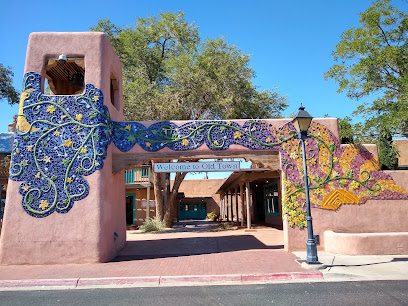
Roosevelt Park
Discover the serene beauty of Roosevelt Park, a perfect blend of recreation and relaxation in Albuquerque, featuring Frisbee golf and lush green spaces.
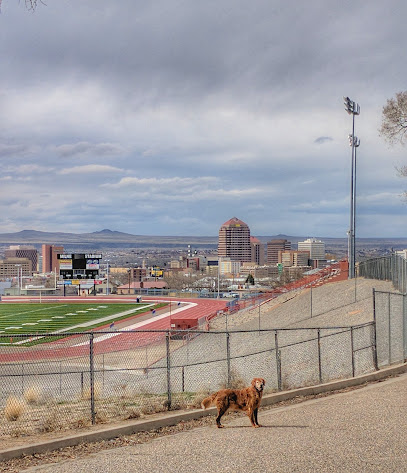
Tingley Beach
Experience the tranquility and recreational charm of Tingley Beach in Albuquerque, New Mexico – a perfect destination for relaxation and outdoor fun.

Rio Grande Nature Center State Park
Explore the natural beauty of Rio Grande Nature Center State Park, a serene oasis in Albuquerque perfect for nature lovers and outdoor enthusiasts.

Kimo Theatre
Experience the architectural beauty and vibrant performances at Kimo Theatre, a historic gem in Albuquerque's cultural landscape.

Robinson Park
Discover the vibrant essence of Albuquerque at Robinson Park, an urban oasis filled with greenery, local culture, and community events.

The Historic El Rey Theater
Experience the soul of Albuquerque at The Historic El Rey Theater, where live music and rich history create unforgettable moments.

Boca Negra Canyon
Explore the breathtaking beauty and rich history of Boca Negra Canyon, a hiking paradise featuring ancient petroglyphs in Albuquerque, New Mexico.

Albuquerque Rail Yards
Discover the vibrant culture of Albuquerque at the Rail Yards, a community center bursting with local crafts, delicious food, and rich history.

Unmissable attractions to see
ABQ BioPark Zoo
Discover exotic wildlife and lush gardens at ABQ BioPark Zoo, a family-friendly destination in Albuquerque, NM, perfect for animal lovers and nature enthusiasts.

Sandia Peak Tramway
Discover breathtaking views and outdoor adventures at the Sandia Peak Tramway, a must-see destination in Albuquerque, New Mexico.
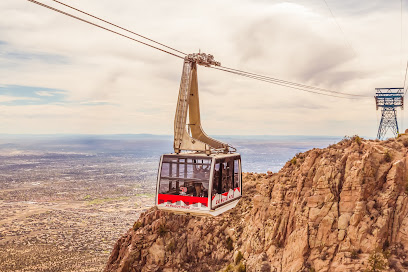
Old Town Plaza
Experience the rich culture, history, and vibrant atmosphere of Old Town Plaza in Albuquerque, New Mexico, the heart of the Southwest.

ABQ BioPark - Botanic Garden
Discover the breathtaking ABQ BioPark Botanic Garden, a tranquil escape filled with diverse flora, children's fantasy areas, and seasonal events in Albuquerque.

Old Town Plaza
Experience the vibrant culture and rich history of Old Town Plaza in Albuquerque, a unique blend of art, dining, and local charm.
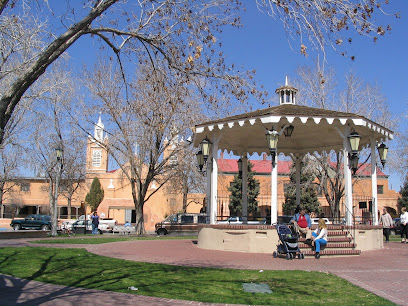
Indian Pueblo Cultural Center
Explore the vibrant cultural heritage of New Mexico at the Indian Pueblo Cultural Center, a must-visit for art lovers and history enthusiasts alike.

Indian Pueblo Cultural Center
Discover the vibrant history and culture of the Pueblo peoples at the Indian Pueblo Cultural Center in Albuquerque, New Mexico.
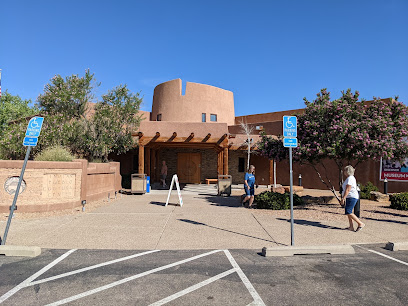
ABQ BioPark Aquarium
Explore the captivating underwater world at the ABQ BioPark Aquarium in Albuquerque, New Mexico, and discover a diverse range of marine life.

New Mexico Museum of Natural History and Science
Uncover the natural wonders of New Mexico at the Museum of Natural History and Science, an engaging destination for all ages filled with fascinating exhibits.

New Mexico Museum of Natural History and Science
Uncover the rich natural history of New Mexico at the captivating Museum of Natural History and Science in Albuquerque, a family-friendly destination.

Explora Science Center and Children's Museum of Albuquerque
Explore the wonders of science and creativity at Explora Science Center, Albuquerque's premier destination for family-friendly learning and fun.

Petroglyph National Monument
Explore the rich cultural heritage and stunning landscapes of Petroglyph National Monument, where ancient rock art tells stories of the past.

Petroglyph National Monument
Explore the ancient petroglyphs and stunning landscapes at Petroglyph National Monument in Albuquerque, New Mexico, a fascinating blend of history and nature.

National Museum of Nuclear Science & History
Discover the rich history and science of nuclear technology at the National Museum of Nuclear Science & History in Albuquerque, NM.
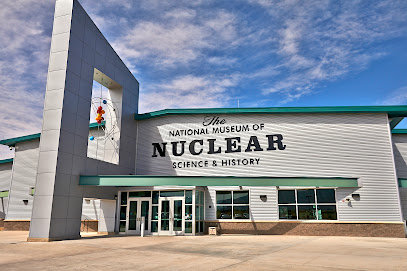
Cliff's Amusement Park
Discover thrills and family fun at Cliff's Amusement Park in Albuquerque – where excitement meets unforgettable memories in a spectacular amusement and water park.

Essential places to dine
Frontier
Discover authentic Mexican flavors at Frontier Restaurant in Albuquerque – where every meal is a celebration of local culture!

Pappadeaux Seafood Kitchen
Discover the vibrant flavors of Gulf Coast cuisine at Pappadeaux Seafood Kitchen in Albuquerque, where fresh seafood meets Southern hospitality.
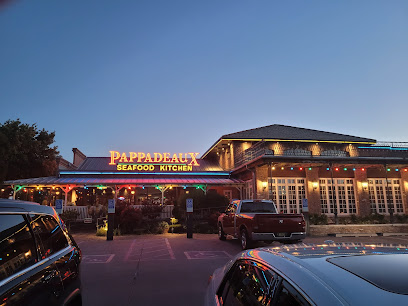
Tucanos Brazilian Grill
Experience the authentic flavors of Brazil at Tucanos Brazilian Grill, where every meal is a vibrant celebration of culture and cuisine.

66 Diner
Experience retro dining at its finest with delicious breakfasts and classic American burgers at Albuquerque's beloved 66 Diner.

Fogo de Chão Brazilian Steakhouse
Savor the rich flavors of Brazil at Fogo de Chão Brazilian Steakhouse in Albuquerque - where every meal is a celebration.

The Original Cocina Azul
Discover authentic Mexican flavors at The Original Cocina Azul in Albuquerque - where every dish tells a story.

Two Fools Tavern
Discover Two Fools Tavern: A charming Irish pub in Albuquerque offering hearty meals, craft beers, and live music in a lively atmosphere.
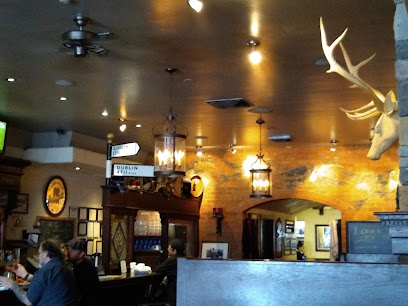
Monroe's Restaurant
Experience the rich flavors of traditional Mexican cuisine at Monroe's Restaurant in Albuquerque - where every meal tells a story.

Seasons 52
Experience fresh seasonal cuisine at Seasons 52 in Albuquerque - where healthy meets delicious in every dish.

Cervantes
Discover authentic Mexican flavors at Cervantes in Albuquerque's International District – a must-visit culinary destination for all travelers.

Campo at Los Poblanos
Experience the best of New Mexican cuisine at Campo - where farm-fresh ingredients meet rustic charm in Los Poblanos.

The Grove Cafe & Market
Discover The Grove Cafe & Market in Albuquerque: A delightful brunch spot serving organic dishes bursting with flavor.

El Patio De Albuquerque
Experience authentic Southwestern American cuisine at El Patio De Albuquerque - where every dish tells a story.

Vernon's Speakeasy
Discover the charm of Vernon's Speakeasy in Albuquerque – where exceptional steaks meet a captivating atmosphere.

Christy Mae's Restaurant
Discover delicious American cuisine at Christy Mae's Restaurant in Albuquerque - perfect for families and food lovers alike.

Markets, malls and hidden boutiques
Coronado Center
Experience Albuquerque's Coronado Center, a vibrant shopping mall with diverse stores, dining options, and entertainment for the perfect day out.

Cottonwood Mall
Discover Cottonwood Mall, Albuquerque's largest shopping destination, featuring over 100 stores, diverse dining options, and family-friendly entertainment.

Winrock Town Center
Discover the vibrant shopping and entertainment experience at Winrock Town Center in Albuquerque, offering diverse stores, dining, and a movie theater.

ABQ Uptown
Explore ABQ Uptown - Albuquerque's ultimate shopping mall with diverse stores, exquisite dining, and a vibrant atmosphere perfect for all travelers.

Far North Llc
Discover Far North LLC in Albuquerque for an unforgettable shopping experience with diverse stores and delectable dining options.

Other Indoor Flea Market
Explore the vibrant Other Indoor Flea Market, a hub of local culture in Albuquerque offering handmade crafts, vintage finds, and delicious treats.

The Breaking Bad Store ABQ
Discover a treasure trove of Breaking Bad memorabilia at The Breaking Bad Store ABQ, where fandom meets unique souvenirs in Albuquerque.
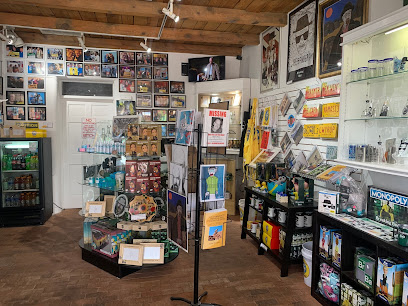
Camino 66
Discover the heart of New Mexico at Camino 66, a vibrant gift shop showcasing local artisan crafts and unique home goods in Albuquerque's West Old Town.

Antique Specialty Mall
Explore a unique selection of vintage antiques and collectibles at the Antique Specialty Mall in Albuquerque, New Mexico, where history comes alive.

Antiques & Things
Explore a unique collection of vintage items and antiques at Antiques & Things in Albuquerque, a paradise for treasure hunters and history lovers.

New Mexico Look
Explore New Mexico Look in Albuquerque for unique gifts and local artisan crafts, perfect for souvenirs and sporting goods.

Old Town Emporium
Explore unique gifts and local crafts that embody the spirit of New Mexico at Old Town Emporium in Albuquerque's historic Old Town.
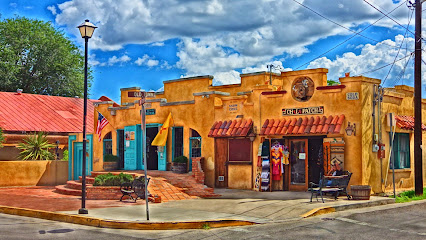
Birdland The Hippie Store
Explore Birdland The Hippie Store in Albuquerque for unique clothing, collectibles, and a touch of local culture in a vibrant shopping experience.

Oriental Gifts
Explore a treasure trove of unique gifts and cultural artifacts at Oriental Gifts in Albuquerque's Uptown for an unforgettable shopping experience.

Covered Wagon
Explore Covered Wagon, a unique souvenir store in Albuquerque, offering authentic Native American goods and exquisite knives that capture the essence of New Mexico.
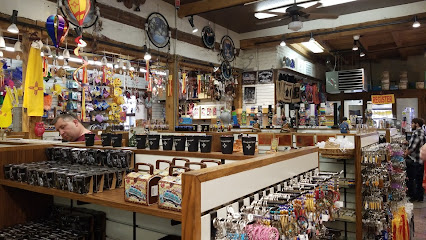
Essential bars & hidden hideouts
Two Fools Tavern
Experience the heart of Irish hospitality at Two Fools Tavern in Albuquerque, where hearty meals and friendly vibes await every visitor.

Sister
Discover Sister in Albuquerque, where live music, delicious food, and arcade fun create unforgettable nightlife experiences.

Craft Republic - Albuquerque
Discover the vibrant flavors of Craft Republic in Albuquerque, where delicious grilling meets a lively bar atmosphere for an unforgettable dining experience.

The Library Bar & Grill
Explore the vibrant nightlife of Albuquerque at The Library Bar & Grill, where great drinks and live music create unforgettable memories.

The Copper Lounge
Experience Albuquerque's vibrant cocktail scene at The Copper Lounge, where innovative drinks and a cozy atmosphere await you.

Anodyne
Experience the vibrant nightlife at Anodyne, Albuquerque's premier bar and cocktail destination, offering a lively atmosphere and expertly crafted drinks.

Zinc Wine Bar & Bistro
Explore the exquisite flavors of Zinc Wine Bar & Bistro in Nob Hill, Albuquerque – a perfect blend of gourmet dining and exceptional wines.

Two Cranes Bistro + Brew
Experience the vibrant flavors of New Mexico at Two Cranes Bistro + Brew, a top-rated bar and restaurant in Albuquerque’s West Old Town.

Happy Accidents
Discover Happy Accidents, a vibrant bar and restaurant in Albuquerque's Nob Hill, offering craft cocktails and delicious cuisine that capture the local spirit.

Apothecary Lounge
Discover Apothecary Lounge in Albuquerque - a rooftop cocktail bar offering innovative drinks and stunning skyline views for an unforgettable night out.

Backstage at Revel
Discover the vibrant nightlife at Backstage at Revel, a premier bar in Albuquerque offering craft cocktails, live entertainment, and a welcoming atmosphere.

Bar Uno
Experience the vibrant nightlife of Albuquerque at Bar Uno, where expertly crafted cocktails and a lively atmosphere await you.
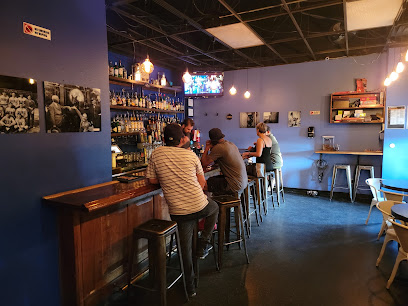
Downtown Distillery
Discover the vibrant nightlife at Downtown Distillery, where local flavors and craft cocktails come together in the heart of Albuquerque.

Founders Speakeasy
Experience the charm of Founders Speakeasy, a vintage-style bar in Albuquerque offering artisanal cocktails and a vibrant nightlife atmosphere.

Teddy Roe's
Explore the vibrant local culture at Teddy Roe's, a bar in Albuquerque's Nob Hill offering unique drinks and a cozy atmosphere.

Local Phrases
-
- HelloHowdy
[HAO-dee] - GoodbyeAdios
[AH-dee-ose] - YesYeah
[YEH] - NoNope
[NOHP] - Please/You're welcomePlease/No problem
[PLEEZ/NOH-PROB-lem] - Thank youThank ya
[THANK-yuh] - Excuse me/SorryPardon me/My bad
[PUHR-dun mee/MAI bad] - How are you?How ya doin'?
[HAO yuh DOO-in] - Fine. And you?Fine. And you?
[Fine. And you?] - Do you speak English?Ya speak English?
[Yuh speak ING-lish] - I don't understandI don't get it
[AI dohnt GET it]
- HelloHowdy
-
- I'd like to see the menu, pleaseCan I check out the menu?
[CAN ai CHEK out the MEN-yoo] - I don't eat meatI don't do meat
[AI dohnt doh MEET] - Cheers!Cheers!
[CHEERS] - I would like to pay, pleaseI'm ready to settle up
[AI'm RED-ee to SET-ul up]
- I'd like to see the menu, pleaseCan I check out the menu?
-
- Help!Help!
[HELP] - Go away!Go away!
[GOH uh-WAY] - Call the Police!Ring up the cops!
[RING up the kawps] - Call a doctor!Get a doc on the line!
[Get a doc on the LAIN] - I'm lostI'm turned around
[AI'm turned a-ROWND] - I'm illI'm not feelin' well
[AI'm not FEE-lin well]
- Help!Help!
-
- I'd like to buy...I wanna get...
[AI WAN-uh GET] - I'm just lookingJust browsing
[JUST BROUZ-ing] - How much is it?How much does it run?
[HAO MUCH duz it RUN] - That's too expensiveThat's steep
[That's STEEP] - Can you lower the price?Can ya drop the price?
[Can yuh DROP the price]
- I'd like to buy...I wanna get...
-
- What time is it?What's the time?
[Whats the TIME] - It's one o'clockIt's one
[Its WUN] - Half past (10)Half past (10)
[Half past (TEN)] - MorningMorning
[MORN-ing] - AfternoonAfternoon
[AF-ter-NOON] - EveningEvening
[EVE-ning] - YesterdayYesterday
[YES-ter-day] - TodayToday
[To-DAY] - TomorrowTomorrow
[To-MOR-row] - 1One
[WUN] - 2Two
[TOO] - 3Three
[THREE] - 4Four
[FOR] - 5Five
[FIVE] - 6Six
[SIX] - 7Seven
[SEV-en] - 8Eight
[AIT] - 9Nine
[NINE] - 10Ten
[TEN]
- What time is it?What's the time?
-
- Where's a/the...?Where's the...?
[Where's the] - What's the address?What's the addy?
[Whats the ADD-ee] - Can you show me (on the map)?Can you point it out (on the map)?
[Can yuh POINT it out (on the map)] - When's the next (bus)?When's the next (bus)?
[Whens the next (BUS)] - A ticket (to ....)A ticket (to ....)
[A TICK-et (to)]
- Where's a/the...?Where's the...?
History of Albuquerque
-
Albuquerque was founded in 1706 as La Villa de Alburquerque by Spanish settlers led by Governor Francisco Cuervo y Valdés. The city was named in honor of the Viceroy of New Spain, the Duke of Alburquerque. The extra 'r' was later dropped from the name, simplifying it to the modern spelling. The city was originally established as a trading post along the Camino Real, a significant trade route that connected Mexico City to Santa Fe.
-
Established in 1881, the Albuquerque Indian School was a boarding school designed to assimilate Native American children into Euro-American culture. The institution operated for nearly a century and served as a significant, albeit controversial, part of Albuquerque’s history. Its legacy is complex, reflecting both cultural suppression and the resilience of Native American communities.
-
The heart of historic Albuquerque, Old Town was the city’s first neighborhood, established around the Plaza. Old Town's adobe buildings and narrow, winding streets are a testament to its Spanish colonial roots. Today, it serves as a cultural hub with museums, shops, and restaurants, preserving the rich heritage of the area.
-
In 1880, the arrival of the Atchison, Topeka and Santa Fe Railway marked a turning point in Albuquerque's development. The railroad brought economic growth and transformed Albuquerque into a bustling trade center. The city expanded rapidly, leading to the establishment of New Town, which now forms the downtown area.
-
During World War II, Albuquerque played a role in the Manhattan Project, the secret U.S. project to develop the atomic bomb. The city was a hub for military personnel and scientists involved in the project, many of whom were stationed at nearby installations like Kirtland Air Force Base. This period significantly impacted Albuquerque's growth and its place in American history.
-
The Albuquerque International Balloon Fiesta, first held in 1972, is one of the city's most iconic events. It began with just 13 balloons and has grown into the largest hot air balloon festival in the world, attracting hundreds of balloons and thousands of spectators each October. The event celebrates Albuquerque's unique weather conditions, which are ideal for ballooning, and has become a major cultural and tourist attraction.
-
Route 66, the historic highway that ran from Chicago to Los Angeles, passed through Albuquerque and played a crucial role in the city's mid-20th-century development. The stretch of Route 66 through Albuquerque, now Central Avenue, became lined with motels, restaurants, and neon signs, many of which still exist today. This legacy contributes to Albuquerque's nostalgic charm and cultural vibrancy.
Albuquerque Essentials
-
Albuquerque is served by Albuquerque International Sunport (ABQ), which offers numerous domestic flights and a few international connections. The airport is located about 3 miles southeast of downtown Albuquerque. From the airport, you can take a taxi, rideshare service, or rental car to reach your destination. Amtrak's Southwest Chief route also stops in Albuquerque, providing train service from Chicago to Los Angeles.
-
Albuquerque has a variety of transportation options. ABQ Ride operates the city's public bus system, which covers most major attractions and neighborhoods. Taxis and rideshare services like Uber and Lyft are widely available. For a more scenic option, consider the New Mexico Rail Runner Express, which travels between Albuquerque and Santa Fe. Renting a car is also a convenient option, especially if you plan to explore surrounding areas like the Sandia Mountains or Santa Fe.
-
The official currency in Albuquerque is the United States Dollar (USD). Credit and debit cards are widely accepted in hotels, restaurants, and shops. ATMs are plentiful, making it easy to withdraw cash as needed. It's advisable to carry some cash for use in smaller establishments and local markets.
-
Albuquerque is generally a safe city for tourists, but it's important to be aware of your surroundings. Areas like the International District and parts of Downtown can have higher crime rates, particularly at night. Avoid walking alone in these areas after dark and keep your belongings secure. Be cautious in crowded places and always lock your car doors.
-
In case of an emergency, dial 911 for immediate assistance. Albuquerque has several hospitals and urgent care facilities. University of New Mexico Hospital (UNMH) is the largest and most comprehensive medical center in the city. For non-emergency medical issues, there are numerous pharmacies where you can purchase over-the-counter medications.
-
Fashion: Do dress in layers, as temperatures can vary widely throughout the day. Comfortable walking shoes are recommended. Religion: Do respect local customs. Albuquerque has a diverse population, including Native American and Hispanic communities with their own traditions and practices. Public Transport: Do have exact change or a bus pass when using public buses. Don't be loud or disruptive. Greetings: Do greet people with a smile and a simple 'Hello' or 'Hi.' Eating & Drinking: Do try local cuisine like green chile dishes and New Mexican cuisine. Don't tip less than 15% in restaurants, as tipping is customary.
-
To experience Albuquerque like a local, visit the Old Town area, which offers a mix of historic sites, shops, and restaurants. Attend a local event like the Albuquerque International Balloon Fiesta if your visit coincides. Explore the many hiking trails in the Sandia Mountains and take in the views from the Sandia Peak Tramway. For a unique experience, visit one of the city's many cultural centers, such as the Indian Pueblo Cultural Center.
Trending Landmark in Albuquerque
-
Sandia Peak Tramway
-
Old Town Plaza
-
New Mexico Museum of Natural History and Science
-
Petroglyph National Monument
-
National Museum of Nuclear Science & History
-
Cliff's Amusement Park
-
Albuquerque Museum
-
Roosevelt Park
-
Tingley Beach
-
Rio Grande Nature Center State Park
-
Kimo Theatre
-
Robinson Park
-
The Historic El Rey Theater
-
Boca Negra Canyon
-
Albuquerque Rail Yards
Nearby Cities to Albuquerque
-
Things To Do in Bernalillo
-
Things To Do in Santa Fe
-
Things To Do in Sante Fe
-
Things To Do in Los Alamos
-
Things To Do in Socorro
-
Things To Do in Las Vegas
-
Things To Do in Taos
-
Things To Do in Gallup
-
Things To Do in Ruidoso
-
Things To Do in Truth or Consequences
-
Things To Do in Farmington
-
Things To Do in Pagosa Springs
-
Things To Do in Durango
-
Things To Do in Roswell
-
Things To Do in Alamosa















